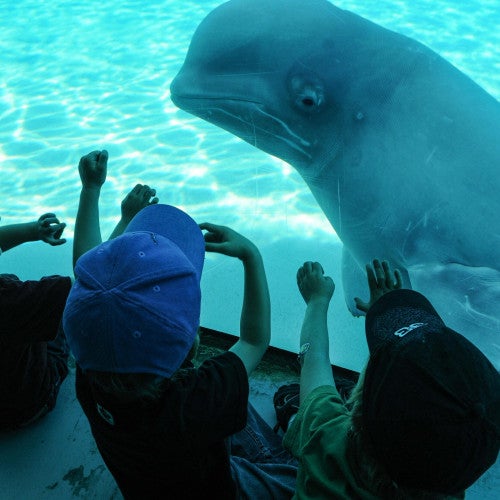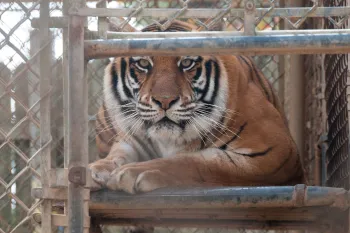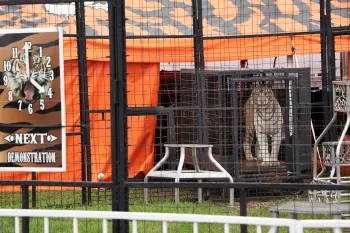The public display industry keeps many species of marine mammals, especially whales and dolphins, captive in concrete tanks. Humane World for Animals (formerly the Humane World for Animals) believes that these animals are best seen in their natural coastal and ocean environments instead of being held captive simply to entertain people.
Life in the wild
The very nature of these animals makes them uniquely unsuited to confinement. In the wild, whales and dolphins live in groups, often in tight family units. Family bonds often last many years. In some species, they last for a lifetime.
Whales and dolphins travel long distances each day, sometimes swimming in a straight line for a hundred miles as they search for food and socialize, other times remaining in a certain area for hours or days, moving for miles along a coastline and then turning to retrace their path. These marine mammals can dive up to several hundred meters and stay underwater for half an hour or more. They would normally spend only 10% to 20% of their time at the surface.
The sea is to whales and dolphins much as the air is to birds—a three-dimensional environment, where they can move up and down and side to side. But whales and dolphins don't stop to perch. They never come to shore, as seals and sea lions do. Whales and dolphins are always swimming, even when they "sleep." They're "voluntary breathers," conscious during every breath they take. They're always aware and always moving. Understanding this, it's easy to see the cruelty of keeping these animals in what amounts to no more than a small swimming pool.
The death of yet another beluga whale at Marineland
Marineland has a well-documented history of being investigated for animal abuse, neglect and exploitation.
Life in captivity
Life for captive whales and dolphins is nothing like a life in the sea. It's almost impossible to maintain a family group in captivity as animals are traded among different facilities. Their tanks allow only a few strokes in any direction before coming to a wall. Because tanks are shallow, the natural tendencies of whales and dolphins are reversed—they must spend more than half their time at the tank's surface.
This unnatural situation can cause skin problems. In addition, in captive killer whales (orcas), it's the probable cause of dorsal fin collapse. Without the support of water, gravity pulls their tall, top fins over as the whale matures. Collapsed fins are experienced by all captive male orcas and many captive female orcas. However, they're observed in only about 1% of orcas in the wild.
In a tank, the environment is monotonous and limited in scope. Sonar clicks, the method by which individuals navigate and explore their surroundings, have limited utility in such an environment. These animals, who are perpetually aware, have nothing like the varied stimulation of plants and fish and other animals in their natural environment. In perpetual motion, they're forced into literally endless circles. Life for these animals is a mere shadow of what it was in the wild.
Help protect wildlife and keep all animals safe
By making a donation today, you can help Humane World for Animals International combat the wildlife trade around the world


